
Nov. 28, 2023
By Jude McElroy
Editor
Back in June 2019, Nintendo revealed in a short teaser trailer that The Legend of Zelda: Breath of the Wild would be getting a sequel. We knew nothing about the game besides the footage that was shown, none of it being actual gameplay. But many, myself included, were very excited.
Breath of the Wild was one of the most influential games of all time, and it was getting a follow-up. There was zero news in the following two years. In June 2021, we finally saw gameplay in another very brief trailer with an expected release date of late 2022. This release date was extended to mid-2023, and the game was finally given a title in September 2022: The Legend of Zelda: Tears of the Kingdom.
Breath of the Wild was not an easy game to follow up on. It set the standard for open-world games back in 2017 alongside releases like Red Dead Redemption 2. It won Game of the Year in 2017 and received continuous praise from almost everyone who has played it. Tears of the Kingdom had a lot to live up to. A sequel over six years in the making, it follows up on Breath of the Wild. Expectations were high. And I am happy to report that Tears of the Kingdom smashed my already high expectations out of the park.
Tears of the Kingdom starts out with a lot of story, which greatly contrasts Breath of the Wild. The first 10-15 minutes of the game is exposition. Link and Zelda are beneath Hyrule Castle, believing it to be the source of the gloom that has been causing people to become sick. As they delve deeper, they uncover ancient Zonai architecture. These date back thousands of years to the creation of the Kingdom of Hyrule. This is further proven to Zelda when she finds a massive mural depicting the founding of Hyrule and the Imprisoning War that ensued soon after the King and Queen rose to power. But this isn’t the end of the tunnel, and Link and Zelda continue further.
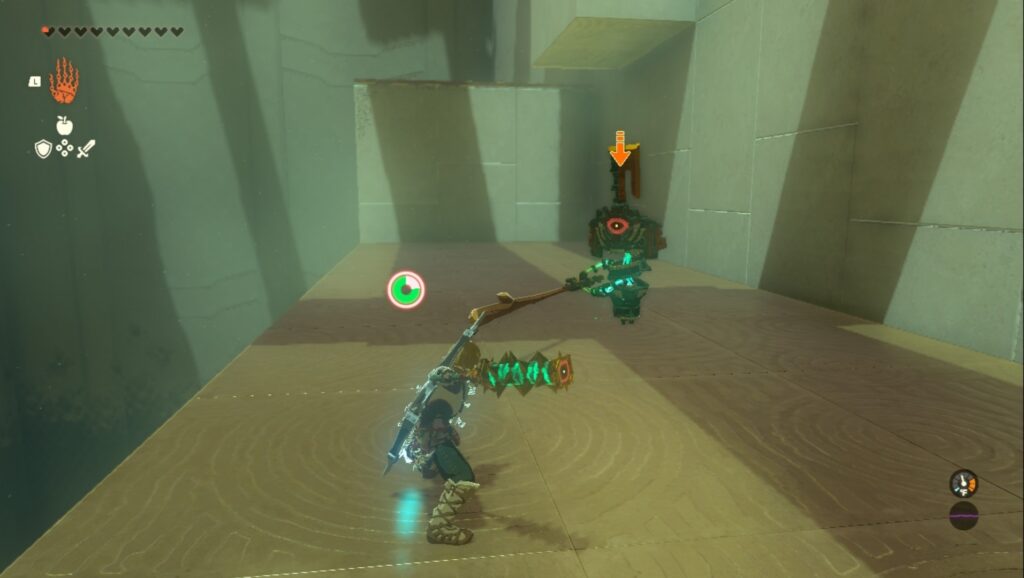
They make it to a huge open chamber. In the center of the chamber, a mummified corpse is held down by a disembodied hand, with green energy swirling from the hand. As Link and Zelda press closer, the hand falls off the corpse, and a stone falls off the wrist of the hand. Zelda picks it up but is interrupted by the corpse. It begins to move, slowly shaking off thousands of years of dust, only to reveal that it knows who Link and Zelda are.
The corpse launches an attack at Zelda, and Link tries to stop it. Link is not powerful enough to stop the attacks. The blade of the Master Sword shatters, and Link’s right arm is gravely injured, leaving him defenseless. The corpse decides not to kill the duo right there, and instead uses its power to lift Hyrule Castle into the sky. The chamber begins crumbling around them, and Zelda begins to fall. Despite being hurt, Link dives after her but misses her hand. Zelda disappears in a yellow light, and Link is saved by the arm that was holding down the mummy.
Link wakes up in a strange room with a new arm and is contacted by a being through the arm. Link picks up the broken Master Sword, and leaves the chamber he was kept in. He finds out that he is now high above Hyrule, on an ancient sky island called the Great Sky Island. Link presses on to the Temple of Time, seeing old Zonai tech and architecture along the way.
At the Temple, he meets with the ghost of Rauru, the first king of Hyrule, who is also a Zonai. He tells Link that his new arm was Rauru’s, but it is not at full power yet. Rauru instructs Link to visit the Shrines on the Great Sky Island to give the arm its abilities back. After doing so, Link returns to the Temple, and has a vision of Zelda, who gives him another ability.
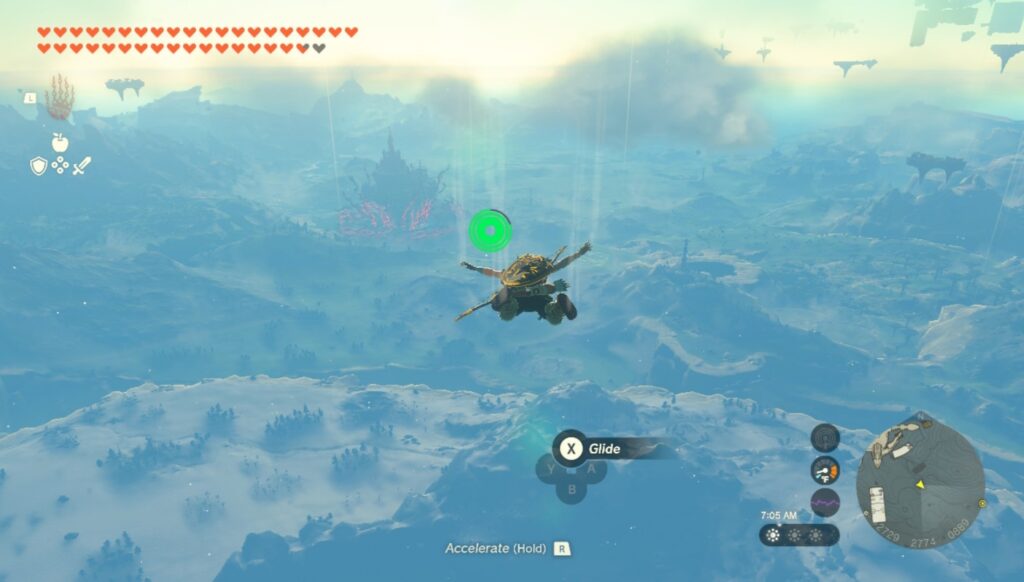
After opening the door guarding the only way down to the surface, Link comes across a yellow light on a pedestal behind the Temple. The Master Sword glows, signaling to Link that it wants to be placed on the pedestal. It disappears, and Link dives to the surface to hopefully find answers as to what happened while he was in the sky.
Upon landing, he makes his way towards Lookout Landing, a new settlement that was built not too long ago outside Hyrule Castle. Everyone at the settlement is surprised to see Link, and they tell him to meet with Purah. The events that happened beneath Hyrule Castle are now called the Upheaval. The corpse raising Hyrule Castle into the sky also seemed to draw out sky islands, and rubble from these ancient landmasses have fallen onto Hyrule. Every major region is now also dealing with a major disaster, and Link’s main priority is to help the Gerudo, Goron, Rito and Zora.
The player has access to a couple of new abilities in Tears of the Kingdom. Breath of the Wild had runes, permanent abilities that the player could use in combat and in puzzle solving. They were typically very situational, like Cryonis, which needed water to work, and Magnesis, which could pick up and move only metal items. But Tears of the Kingdom takes Breath of the Wild’s runes and improves on them in every single way.
First is Ultrahand, which is basically just Magnesis from Breath of the Wild but better. The player can now pick up anything that moves, regardless of what it’s made of. Items can also be attached to each other. These items can be materials, weapons, objects in the world like rocks and logs, and even special building materials called Zonai devices. Zonai devices have so many different uses. There are fans, rockets, cannons, flamethrowers, big and small wheels, steering sticks, balloons and so much more. They open up a world of endless possibilities and allow the player’s imagination to run wild. I know I didn’t get super crazy with Ultrahand, but look anywhere on the internet and you’ll find some very inventive creations.
They battle past Constructs and bounce between islands, eventually emerging above the storm cloud. The weather breaks. The sky is clear. It’s dead silent. It’s genuinely beautiful.
You can even save creations using Autobuild, an ability players get after the Great Sky Island. It allows players to save up to 30 previous creations and favorite a couple of them. Creations can be remade instantly by either using nearby materials or a material called Zonaite, which I’ll explain a bit more about later. Zonaite can also be used to lengthen the time Zonai devices can be active for.
Next is Fuse, which is a very combat-centric ability. It allows the player to fuse any material that they may have on hand to their weapons, shields and arrows. Due to the Upheaval, almost every weapon across Hyrule has rusted. But using the Fuse ability, the player can subside the low damage of regular weapons. Take the Royal Broadsword, for example. In Breath of the Wild, it did 36 damage, but in Tears of the Kingdom, it only does 14. This is to encourage players to engage with Fuse, and I’m all for it.
There are a ton of useful fusions. One important material is the Bomb Flower. It is most commonly used as a way to launch explosions at large groups of enemies by attaching one to an arrow, but it has alternative uses. Fusing one to a shield and doing a shield jump sends the player flying, allowing them to gain height insanely quickly, which is great for combat and just general traversal.
Fuse also encourages the player to engage in more combat. Every monster now drops its horn, and these parts are always the strongest. Instead of having a practical use like other materials, monster horns are used purely for damage. Fusing them to a player’s weapons allows them to create powerful weapons, which, in turn, makes combat easier, giving the player access to more powerful monster horns.
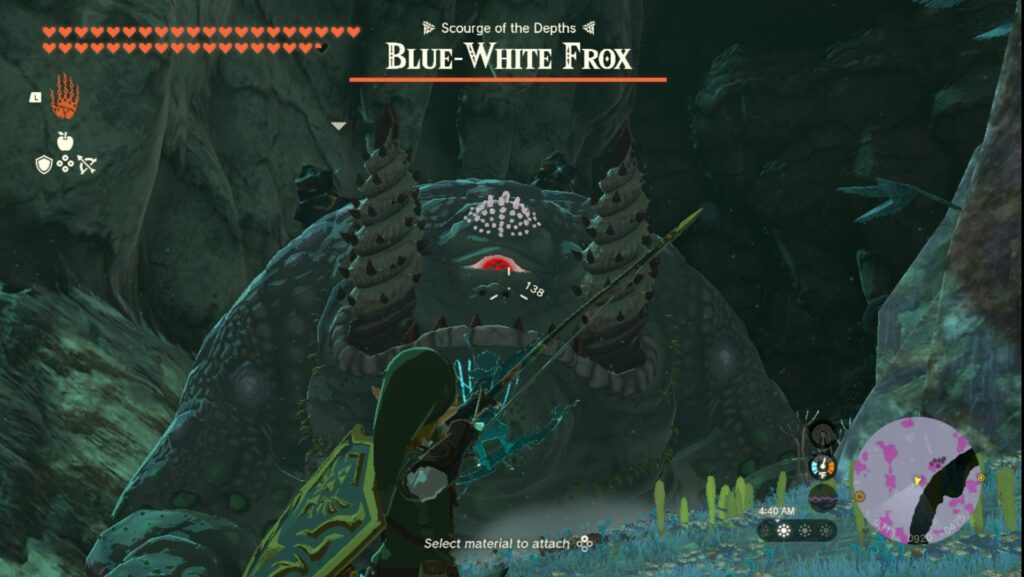
Fuse was also the main response to one of Breath of the Wild’s biggest problems: weapon durability. In Breath of the Wild, all of a player’s equipment would break after being used for a certain amount of time. Fuse sets out to fix this problem, and it does so very well. Breath of the Wild tries to teach that it’s okay if weapons break, but many people still want to hold onto their weapons. Tears of the Kingdom make the weapons even more expendable, with the main damage of a player’s weapon coming from whatever they fuse to it, not the weapon itself. The best part is that players can hoard as much material as they want, so it just comes down to the player to fight monsters and explore so they can keep their stock of weapons healthy.
Next is Ascend, which allows players to move up from the bottom of an object to the top. Being below a box and using Ascend will bring the player to the top. It’s extremely useful for traversing the world, or when a player doesn’t feel like climbing. It’s not super useful in combat; it mainly just helps to get above enemies or reach enemies that are above the player, but it’s still a super fun ability. It makes Breath of the Wild’s climbing feel archaic by comparison.
Finally is Recall, which allows the player to rewind the movement of an object. That device a player was building fell off a cliff? Just use Recall to bring it back up to where they can save it. It’s extremely useful and creates some great puzzles in the Shrines and Dungeons.
Speaking of Shrines and Dungeons, both are back and improved from Breath of the Wild. There are now 32 more (20 more if you count the DLC) Shrines in Tear of the Kingdom compared to Breath of the Wild. They all follow a similar format to the Shrines from Breath of the Wild. Short, concise puzzles lead to a Light of Blessing. Collecting four Lights allows the player to trade it in for either an extra heart or more stamina, encouraging them to look for Shrines.
My personal favorite type of Shrines are the Proving Grounds Shrines. In Breath of the Wild, there was one Shrine Quest in particular that stood out to me. It was called Stranded on Eventide. It took place on Eventide Island, a small island in the bottom right corner of Hyrule, isolated from the mainland. Touching down on the island prompts the removal of all the player’s equipment, and they are tasked with recovering three orbs. Recovering the orbs and returning them to their pedestal will allow the player to reclaim their stuff and access a Shrine. It requires the player to use the environment around them to overcome the challenges on the island, and it’s easily the best Shrine Quest in the game. Tears of the Kingdom takes this great idea and turns it into actual complete Shrines.
Proving Grounds Shrines strip the player of everything they own, providing them with a couple of weak weapons and throwing them into a combat scenario with many Zonai Constructs. The goal is to defeat all the Constructs by any means necessary. I love how creative players can get with the combat in this game, but I don’t always take advantage of that freedom. These Shrines require players to get creative, which is great. Using the stuff the Shrine has lying around creates some awesome moments. Thinking of a quick solution on the fly and executing it feels so good.
The dungeons have been improved greatly too. They are still not perfect, but they are much better than Breath of the Wild. Breath of the Wild’s Divine Beasts blended together. They all looked the same and had similar bosses and enemies inside them. They were not bad at all, just kind of unmemorable. Tears of the Kingdom fixes most, not all, of these issues.
Every Temple has its own unique themes and puzzles to match that theme, with a visually distinct boss to boot. The puzzles are still pretty simplistic, but the fundamentals of Tears of the Kingdom already make the puzzle-solving in the Temples quite a bit better than those of the Divine Beasts. The Temples are located in each of the main regions, with one more that is unlocked after completing the others. But sometimes the best part of these isn’t even what’s in the Temple, it’s the buildup.
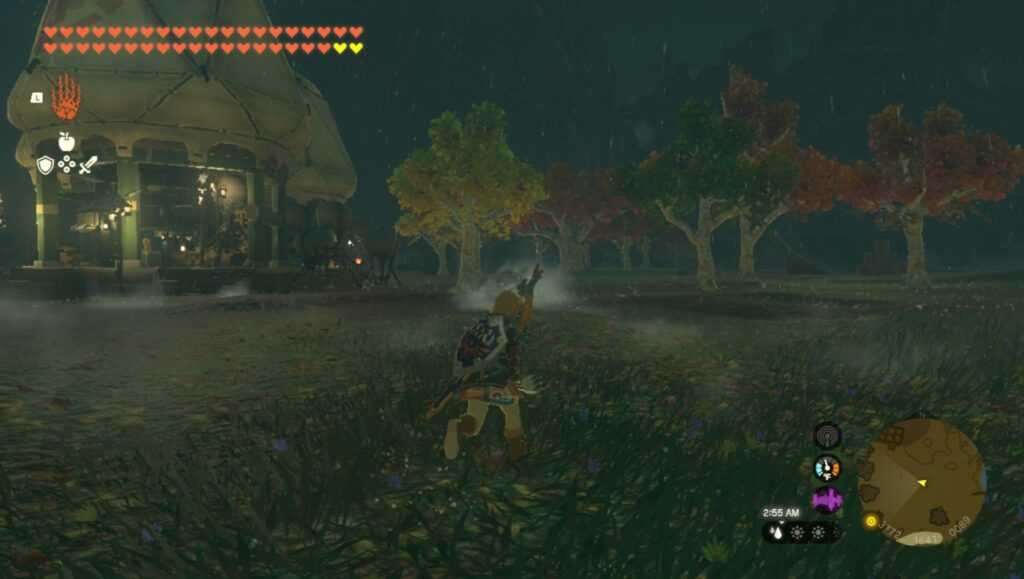
Let’s focus on the Wind Temple, easily the best of the main story quests. Link arrives in Rito Village and finds that the Rito have been battling a horrible blizzard that seems never-ending. After meeting with the Elder Teba, who Link helped in Breath of the Wild, and his now grown-up son Tulin, they begin to brainstorm how to stop the blizzard. Link and Tulin see that the blizzard comes from one cloud, so they climb Hebra Mountain and beyond to reach the cloud. They climb up ancient ruins that fell down alongside the Upheaval. The higher they go, the worse the weather gets. They battle past Constructs and bounce between islands, eventually emerging above the storm cloud. The weather breaks. The sky is clear. It’s dead silent. It’s genuinely beautiful. But it’s short-lived, as they dive into the center of the cloud, where they find the source of it, the Wind Temple, or the Stormwind Ark. The Ark is a piece of ancient Rito folklore that was thought to be false. The spectacle of climbing the storm is amazing. Unfortunately, the other main quests don’t get this good, but they are not bad by any means.
Another big change was the map of Hyrule. At first glance, it might not seem like much has changed since Breath of the Wild. The only really noticeable change by just looking at the map is the lack of lava on Death Mountain, but other than that, there are only a couple of minor changes. But actually exploring Hyrule is a whole different story. Almost everything is different. There’s new stuff everywhere. Every major location has something new attached to it, and it was so exciting to reenter places like Kakariko Village and Hateno Village to see how the people there have been doing since Breath of the Wild.
One of the biggest outsider complaints was that Tears of the Kingdom just looked like downloadable content (DLC) for Breath of the Wild, and the map was just completely unchanged. This wouldn’t even be true if it was just the surface of the Hyrule to explore, but Tears of the Kingdom has two other levels of verticality to its world.
First is the Sky, where the game begins. The Sky is very sparse, with many smaller islands being spread throughout the sky. I have to say it is kind of disappointing that the biggest island in the sky is the one players start on, but it is representative of what the sky has to offer. The smaller islands have a ton of small challenges on them that usually lead to Shrines and other goodies. Thirty-two of the 152 Shrines are located in the Sky, so it’s not that there’s nothing to do in the Sky. It’s just a little disappointing that there wasn’t more to them.
The big addition is the Depths. The Depths were entirely absent from the game’s marketing, and finding out that there’s a whole other level of verticality to the map that Nintendo said nothing about was crazy. The Depths are pitch-black, and the player can use a material called Brightbloom seeds to light the way. The player can also find Lightroots that light up massive portions of the Depths. The Depths are super fun to explore, even if they are a little barren. Running around in the dark with no way of knowing what’s coming up is reminiscent of Subnautica, although there is nothing nearly as scary in the Depths compared to what waits in the ocean in Subnautica.
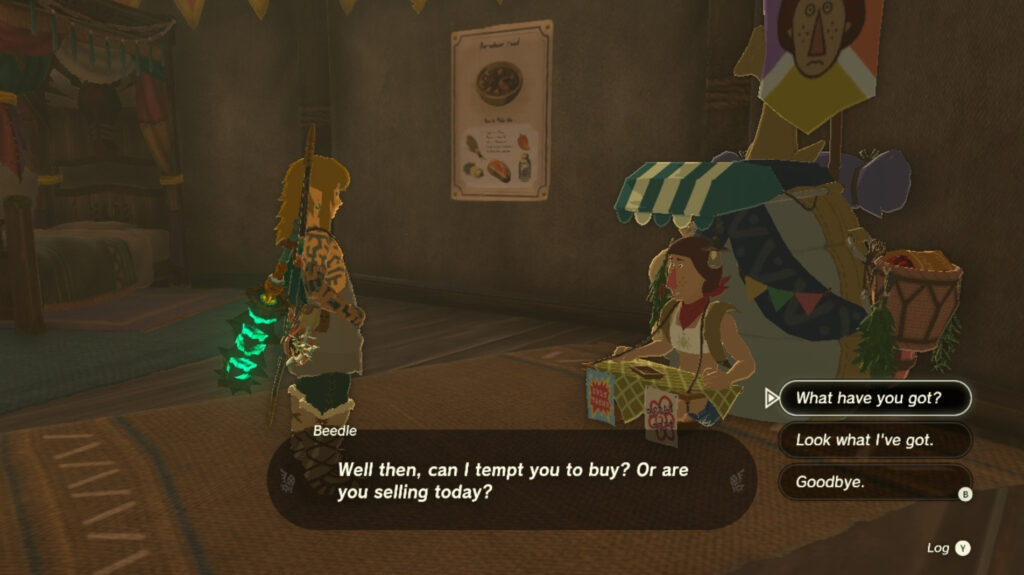
There are a ton of treasure to find in the Depths too. Many of them consist of armor sets referencing past Zelda games. There are colosseums in the Depths where players fight a couple of waves of enemies and are rewarded with a rare piece of armor. Some are located in long-abandoned mines and groves, and other structures that the Zonai left behind thousands of years ago.
The Depths are also where the player can find Zonaite. Zonaite, as mentioned before, is used for Autobuild and expanding the time the player can use Zonai devices. The player can encounter the Yiga clan in the Depths, who are also after Zonaite and understand Zonai tech. They have a lot of bases in Depths, and at each, the player can earn an Autobuild schematic for clearing the camp.
The game could have been a bit better in regards to its narrative, especially with one part of the ending, which will not be talked about to avoid spoilers. The story is revealed in Tears of the Kingdom almost exactly as it was in Breath of the Wild through memories that the player will almost definitely see out of order. This could, unfortunately, lead to some confusing moments for the player. A player could come across one of the later ones chronologically, and it can be confusing to watch due to the missing context. This can spoil a major plot point unintentionally.
Despite the shortcoming in the narrative, Nintendo did a good job following up Breath of the Wild by improving upon it while developing a sense of originality. Tears of the Kingdom is easily a 10/10 and is absolutely worth the money.


